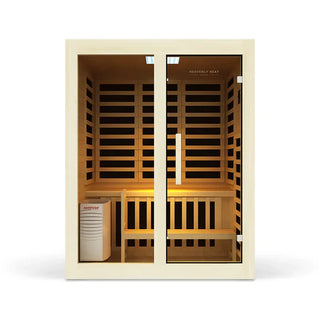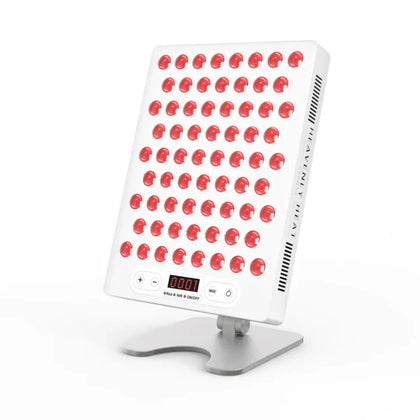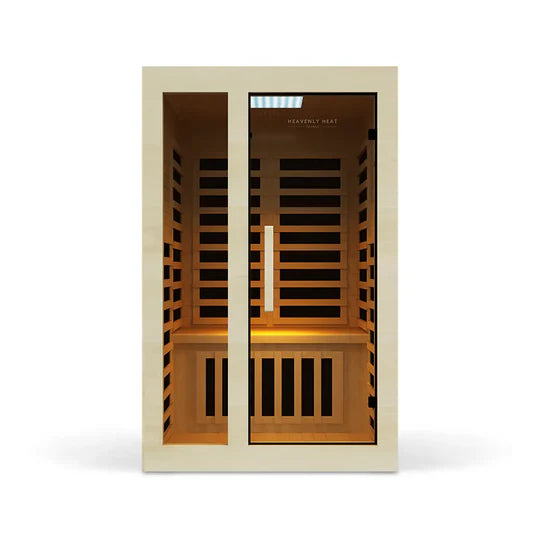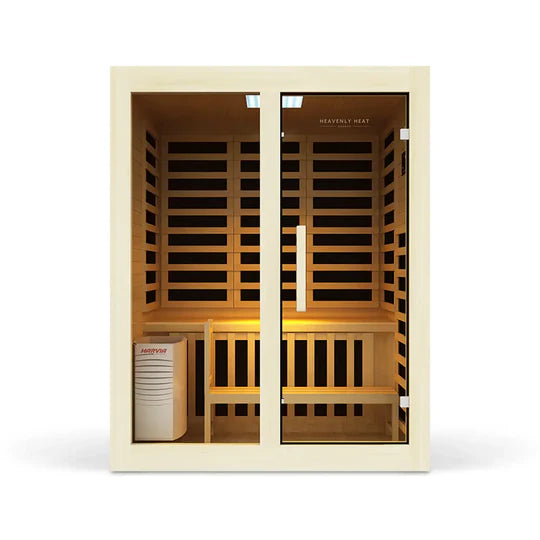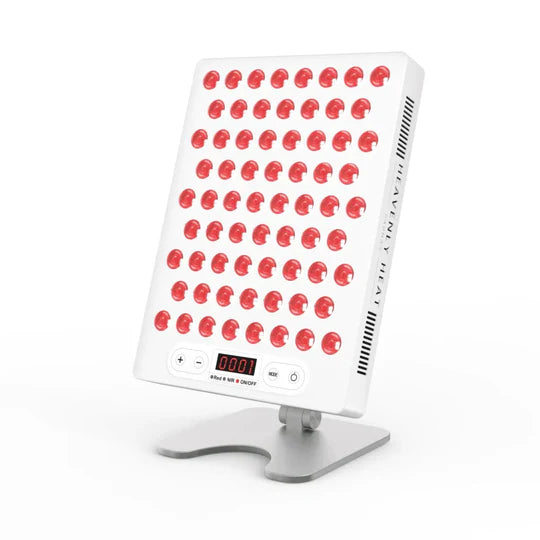21 Essential Tips on How to Prepare for Cold Plunge Safely
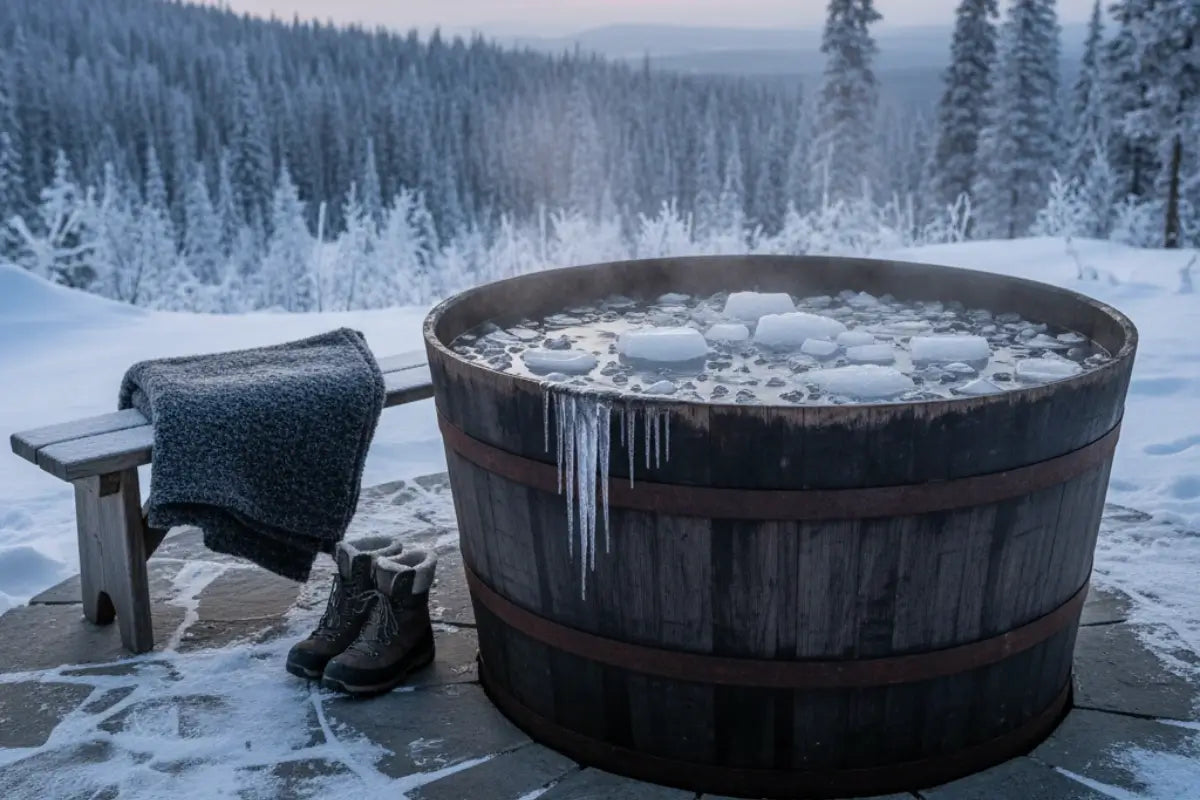
Ready to try a cold plunge but worried about safety? Don’t jump in blindly! My guide shares 21 simple, practical tips to prepare you for a safe and refreshing experience.
From medical checks to breathing tricks, I’ve got you covered to make your icy dip both thrilling and secure. Dive in!
Key Takeaways
Prioritize your safety by getting medical clearance, especially if you have health conditions.
Start with short, 2-5 minute plunges and gradually build your tolerance over time.
Prepare your body with light movements, stay hydrated, and practice calm breathing before entering.
Never plunge alone and have warm towels and dry clothes ready for when you exit.
Listen to your body and exit the water immediately if you feel dizzy or numb.
What Is a Cold Plunge?
A cold plunge is more than just jumping into icy water, it’s a practice with both modern science and deep historical roots.
The Cleveland Clinic notes that beginners usually start with water between 50–59°F (10–15°C), while seasoned practitioners may go as low as 39–50°F (4–10°C).
Most experts suggest staying in for 2–10 minutes, starting slow and gradually building tolerance.
Research published in Eur J Appl Physiol highlights that humans have used cold exposure for centuries, from ice baths to cold-air therapies, to ease pain, support recovery, and promote overall well-being.
Beyond tradition, studies in the Int J Circumpolar Health reveal striking physiological effects: cold water immersion can lower inflammation, improve insulin sensitivity, and even reduce cardiovascular risk markers in those who adapt to regular practice.
While the first plunge triggers an immediate rise in heart rate, blood pressure, and breathing, the body often adapts over time, offering protective and restorative benefits.
Whether viewed as therapy, recovery, or ritual, cold plunging blends history, science, and health in a single invigorating practice.
21 Essential Tips on How to Prepare for Cold Plunge Safely
Get Medical Approval if You Have Health Conditions
Before trying a cold plunge, it’s important to understand the health risks, especially if you have existing conditions.
The American Heart Association explains that sudden immersion in cold water triggers the “cold shock response,” which spikes breathing, heart rate, and blood pressure.
For people with heart issues, this stress on the heart can be dangerous and even life-threatening if they gasp underwater.
Critics like Hydra Morozko point out that hypertension is the biggest concern, since the body’s natural reaction, vasoconstriction, causes a sharp rise in blood pressure.
While this effect may lessen with regular practice or lifestyle adjustments like using a sauna or even beetroot juice, those with untreated high blood pressure should be cautious.
People with diabetes, poor circulation, or conditions like Raynaud’s and neuropathy are also strongly advised to consult a doctor before plunging.
The Centers for Disease Control and Prevention (CDC) further warns about hypothermia, which can set in quickly during extreme cold exposure. Simply put,if you have health concerns, always get medical approval first.

Begin with Short Cold Exposures to Build Tolerance
Starting with brief cold plunges is key for safety and effectiveness. Experts recommend beginners begin with just 30 seconds to a minute in cold water, gradually working up to 5–10 minutes, while 2–3 minutes is sufficient for post-workout recovery.
Research from NCBI / Temperature Journal suggests that humans rely more on behavioral strategies than physiological changes to tolerate cold, as lifetime exposure doesn’t create major metabolic or insulation adaptations.
However, studies in Autonomic Neuroscience show that gradually increasing cold exposure can lead to beneficial physiological adjustments, such as habituation, improved thermogenesis, and enhanced heat conservation.
These adaptations help the body respond more efficiently to cold, reducing shivering and discomfort over time.
Caution is essential: research by Riverside Healthcare highlights that extreme or prolonged cold plunges can be risky for individuals with conditions like heart disease, high blood pressure, or poor circulation.
Starting slow and building tolerance safely ensures a positive and healthful cold plunge experience.
Aim for Safe Water Temperatures (50–59°F / 10–15°C)
When it comes to cold plunges, finding the right water temperature is key to balancing safety with benefits.
Research shows that beginners should start in the 50–59°F (10–15°C) range, which many experts recognize as both safe and effective.
Dr. Van Dien points out that this range is often linked to reduced muscle soreness, while Dr. Russell adds that people commonly use water anywhere from 38–60°F depending on personal tolerance.
Going colder than 50°F (10°C) can be risky, as the body loses heat faster than it can produce, increasing the chance of shock or hypothermia.
In fact, sudden immersion in very cold water can trigger a “cold shock response”, uncontrollable gasping, rapid breathing, and even cardiac stress, raising the risk of drowning.
That’s why most organizations recommend beginners stick with the safer 50–59°F (10–15°C) window before gradually experimenting with lower temperatures.
This approach helps you gain the benefits of cold therapy without overwhelming your body’s natural defenses.
Practice Calm Breathing Before Entering in the cold plunge tub
Before stepping into icy water, practicing calm breathing can make a big difference in how your body reacts.
Slow, deep breaths activate the parasympathetic nervous system, the part that tells your body to relax, which helps lower heart rate, stabilize blood pressure, and even reduce stress hormone (cortisol) spikes.
By stimulating the vagus nerve, breathwork creates a “rest and digest” state, making the shock of cold water feel less overwhelming.
Research published in the Journal of Thermal Biology highlights how cold exposure normally triggers a “cold shock response,” often leading to gasping and rapid breathing, but controlled breathing can reduce this reflex and make immersion safer.
In fact, repeated cold exposure combined with calm breathing may even build tolerance over time.
Techniques like diaphragmatic or box breathing not only prepare the body for cold but may also support better mental health and immunity, according to recent studies.
As Healthline notes, many experts recommend practicing short bursts of deep, rhythmic breaths before immersing, an effective way to step in calm and stay in control.
Warm Up Your Body with Light Movement First
Before stepping into icy water, getting your body moving is one of the best ways to stay safe. Cold muscles are more prone to strains, and as Dr. Adam Tenforde from Harvard’s Spaulding Rehabilitation Network explains, static stretching can actually increase injury risk.
Instead, dynamic movements, like light jogging, arm swings, or bodyweight squats, help loosen joints, raise muscle temperature, and boost circulation.
Light movement also primes the cardiovascular system, creating a natural “pump” that improves oxygen delivery and recovery once you exit the cold.
Verywell Health notes that skipping a proper warm-up may increase your risk of cold shock or even injury since plunging into freezing water puts immediate stress on the heart and blood vessels.
Research in Temperature (Austin) suggests an effective warm-up should last at least several minutes, following a “Raise, Activate, Mobilize, Potentiate” approach to gradually prepare muscles and circulation.
Physiologically, warming up increases heart rate, widens blood vessels, and improves flexibility, making the transition into cold water less abrupt and much safer.

Drink Water to Stay Hydrated Before Cold Plunging
Staying hydrated is one of the most important steps before a cold plunge. Since about 60% of the human body is water, keeping your fluid balance supports everything from temperature regulation to healthy circulation.
On average, men need about 10 cups (2.6 liters) of fluids daily, while women need around 8 cups (2.1 liters), though the real guide is simple: drink enough to keep your urine pale yellow and listen to your thirst.
Cold environments can make hydration trickier, as breathing in dry air, increased urination, and even reduced thirst all contribute to fluid loss.
If you’re not well-hydrated, your body struggles to regulate temperature, and as Montain and Coyle observed, dehydration can intensify both perceived effort and strain in cold settings.
It also places added stress on the heart by lowering blood volume and stroke volume, forcing it to work harder.
By starting your plunge already hydrated, you help your body manage cold stress more effectively, protect cardiovascular function, and ensure a safer, more energizing experience
Avoid Eating Large Meals Right Beforehand
Eating plays a big role in how your body responds to cold plunges. Digestion naturally generates heat (known as the thermic effect of food), which can help maintain core temperature, especially if you’ve had protein or carbs that provide steady or quick energy.
At the same time, research shows that plunging right after a heavy meal can backfire, nausea, stomach cramps, or even dizziness may occur because your body is already sending blood to the digestive system, while the cold demands blood flow to your skin and muscles.
Sources like Healthline and PubMed note this overlap can leave both systems short, leading to discomfort.
HealthyWomen also points out that the temperature of food itself influences how cold or warm you feel, and that blood flow shifts during digestion may reduce cold tolerance.
Sports nutrition guidelines recommend timing: eat a balanced meal 3–4 hours before, or a lighter carb-based snack 1–2 hours prior.
The bottom line, fuel wisely, give your gut time, and your plunge will feel safer and more comfortable.
Choose a Safe and Easy-to-Exit Location
Pick a flat, secure spot with clear visibility of the exit. Avoid slippery surfaces, sharp objects, and strong currents.
Use steps, a ladder, or a gradual slope for safe exit. Check for uneven ground that could trip you. A safe location reduces risk and keeps the experience controlled.
Never Cold Plunge Alone, Always Have a Buddy
Jumping into icy water may feel invigorating, but research shows it can also be risky if you’re unprepared.
The National Weather Service warns that sudden cold water immersion can trigger “cold shock,” causing rapid breathing, spikes in heart rate, and disorientation, factors that increase the chance of drowning even for strong swimmers.
Minnesota Sea Grant adds that in near-freezing water, coordination in the hands and fingers can be lost within minutes, with exhaustion or unconsciousness following soon after, making self-rescue nearly impossible.
That’s why experts like the Red Cross stress never plunging alone. A buddy isn’t just for company, they’re your safety net.
If you faint, struggle to breathe, or experience heart issues, your partner can recognize the signs quickly, call for help, and even begin CPR or use an AED if available.
Having someone nearby drastically improves response time and survival odds. In short, cold plunging can be safe and rewarding, but only if you respect the risks and always bring a buddy to watch your back.
Enter the Water Slowly Instead of Jumping In
Step in gradually to let your body adjust. Jumping can cause rapid breathing, dizziness, or heart rate spikes.
Enter leg-first and monitor your reaction. Gradual immersion prevents hyperventilation and keeps you in control. Beginners should always ease in.
Focus on Slow, Steady Breathing While Immersed
Inhale through your nose and exhale through your mouth in a steady rhythm. Avoid holding your breath.
Slow, rhythmic breathing lowers heart rate, reduces shock, and helps extend immersion. Conscious breathing improves circulation, focus, and control.
Keep Your Head Above Water for Beginners
For beginners, one of the safest approaches to cold plunging is to keep your head above water. Cold water instantly causes your blood vessels to constrict, raising blood pressure and forcing your heart to work harder, a sudden stress response noted by the American Heart Association.
Research published in Trends in Microbiology (Elsevier) highlights that submerging the head can trigger a “cold-shock” reflex: a sudden gasp, rapid breathing, and a spike in heart rate and blood pressure.
In people with heart conditions, this combination may even provoke dangerous arrhythmias. Adding to that, facial immersion activates the trigeminal nerve, producing conflicting signals in the heart, sometimes speeding it up, other times slowing it down, which can increase the risk of drowning even in strong swimmers.
That’s why experts at University of Utah Health recommend first-timers ease in gradually and avoid dunking the head.
While full-body immersion can offer deeper recovery benefits than partial dips, it also creates greater cardiovascular stress, making head-out immersion a smarter and safer choice for those just starting
Limit Cold Plunge Sessions to 2–5 Minutes
Cold plunges can be an incredible tool for recovery and mental health, but timing is everything. Most experts suggest keeping sessions short, around 2–5 minutes, to get the benefits without pushing your body into risky territory.
Scientific studies show that even brief dips can elevate mood, with physiologist John Kelly noting that whether participants stayed in for 5, 10, or even 20 minutes, mood improvements were about the same. That means longer isn’t always better.
In fact, staying in beyond 5 minutes can cause your core temperature to drop too much, putting you at risk of hypothermia, confusion, or in severe cases, unconsciousness.
Sports Medicine of the Rockies explains that cold exposure works by constricting blood vessels, reducing inflammation, and then creating a flushing effect once you warm up, but they caution against exceeding 15 minutes to avoid numbness or frostbite.
Beyond that, risks like cardiac stress or arrhythmia can rise, especially when exiting the water. For most people, a few chilled minutes done consistently are more than enough for safe, effective results.
Pay Attention to Warning Signs Like Numbness or Dizziness
Cold plunges can be invigorating, but it’s important to recognize early warning signs that your body may be struggling.
Medical research shows that numbness in the hands, feet, or other extremities can set in within minutes, sometimes in less than 30 minutes of exposure.
This happens because cold water forces your blood vessels to constrict, slowing circulation and nerve signals, which can make your limbs feel heavy or “like a block of wood.”
Dizziness is another common red flag, often triggered by the sudden cold shock response or the effect of cold water on the inner ear.
In fact, studies of triathletes found that dizziness accounted for about one-fifth of race-related medical visits in cold water.
The risk of disorientation or hypothermia also rises quickly in water below 60°F (15°C), with near-freezing water becoming life-threatening in as little as 15 minutes.
Experts recommend stopping immediately if you feel numbness, tingling, or lightheadedness, these are your body’s signals that it’s time to get out and warm up
Exit the Water Immediately If You Feel Unsafe
Leave immediately if you feel dizziness, intense shivering, numbness, or heart rate changes. Watch for pale or bluish skin, confusion, or fatigue. Trust your instincts. Early exit prevents hypothermia and keeps plunges safe.
Have Warm Towels, Clothes, or Blankets Ready
When you step out of cold water, your body begins losing heat up to 25 times faster than in cold air, with as much as 90% escaping through your skin.
This rapid cooling can trigger “afterdrop,” where cold from your skin and muscles continues pulling heat from your core, leaving you shivering, nauseous, or at risk of hypothermia.
That’s why having warm towels, dry clothes, or blankets ready isn’t just about comfort, it’s about safety.
Studies show that swapping wet clothing for dry layers, especially with a vapor barrier like a dryrobe, helps skin and core temperatures recover more effectively than towels or foil blankets alone.
Adding external heat, such as heating pads or blankets placed on the torso, can boost recovery, though careful use is needed to avoid burns.
Guidance from sources like StatPearls also notes that in more serious cases, methods such as warmed IV fluids or humidified air may be necessary.
But for everyday cold plunges, the fastest and safest step is simple: dry off, dress warmly, and insulate right away.
Reheat Your Body Gradually After the Plunge
After a cold plunge, it’s important to reheat your body gradually rather than rushing into hot showers or saunas.
Research, including insights from the Journal of Clinical Medicine, shows that rapid warming can overwhelm the heart and lungs, disrupt circulation, and even trigger hypothermia-rewarming injuries, causing tissue damage and increased inflammation.
Sudden heat exposure can also lead to dizziness or fainting due to rapid blood pressure changes from vasoconstriction followed by vasodilation.
Experts and sports medicine professionals recommend gentle methods like wrapping in blankets, sipping warm drinks, and light movement to slowly restore circulation and core temperature.
These approaches not only reduce cardiovascular strain but also support thermoregulation, maintain the anti-inflammatory benefits of the cold plunge, and aid muscle recovery.
Incorporating light activity, stretching, adequate rest, proper nutrition, and hydration further enhances recovery.
By focusing on gradual, safe rewarming, you allow your body to recover naturally, keeping your heart, muscles, and overall system stable and ready for your next session.
Skip Alcohol and Stimulants Before or After Cold Plunging
Before taking a cold plunge, it’s important to skip alcohol and stimulants to protect your body and heart.
While alcohol may create a temporary feeling of warmth, research by Freund et al., 1994 shows that it actually lowers core body temperature and increases the risk of hypothermia, especially when combined with prolonged cold exposure.
Granberg, 1991 also highlights that alcohol can delay shivering, reduce its effectiveness, and impair judgment, making you more likely to ignore safety measures.
Similarly, stimulants like caffeine can amplify the heart’s response to cold, raising heart rate and blood pressure, and creating a dangerous imbalance between blood supply and demand.
This combination increases the risk of arrhythmias, particularly in those with pre-existing heart conditions.
Health organizations consistently advise avoiding alcohol and stimulants before cold water activities because they impair coordination, numb your senses, and accelerate heat loss.
Instead, staying hydrated with water and allowing your body to adjust naturally ensures a safer, more controlled cold plunge experience.
Increase Session Length and Frequency Gradually
Start with short plunges and slowly increase time. Begin with one or two sessions per week, adding more as tolerance grows. Increase duration before frequency. Monitor fatigue, chills, or discomfort to avoid overdoing it.
Pair Cold Plunges with Stretching or Light Recovery
Pairing cold plunges with stretching or light recovery movements can significantly enhance muscle recovery and overall well-being.
Cold water immersion temporarily stiffens muscles and reduces joint flexibility, as noted in the Journal of Strength and Conditioning Research, so immediate intense stretching may feel challenging.
However, incorporating gentle stretches or light recovery exercises after your plunge can help loosen tight muscles, improve blood flow, and reduce soreness.
The Mayo Clinic Health System explains that these movements promote faster recovery by minimizing inflammation and restoring physical performance for the next day.
Sports medicine experts highlighted in the Journal of Emergencies, Trauma, and Shock (NCBI) recommend a structured post-exercise routine that includes sufficient rest, gentle stretching, hydration, and even optional contrast therapy, emphasizing a holistic approach over relying solely on one method.
Research also shows that combining cold plunges with light recovery can sometimes provide similar benefits to stretching alone, but the synergy of both ensures a more comprehensive recovery.
Ultimately, pairing cold immersion with mindful movement helps your body recover efficiently while supporting flexibility and reducing post-workout discomfort.
Track How Your Body Responds Over Multiple Sessions
Record body temperature, shivering, heart rate, and mood. Track improvements over time and note what works best.
Metrics like immersion time and water temperature help adjust safely. Observing trends builds confidence and improves results.
The Potential Risks of Cold Plunging
Cardiovascular Stress
When the body is suddenly exposed to cold water, the cardiovascular system reacts instantly. The National Center for Cold Water Safety explains that this shock triggers a rapid spike in blood pressure and heart rate as blood vessels constrict, which can pose serious risks like heart failure or stroke in vulnerable individuals.
Research by Bird, House & Tipton (2015) found that in adults, heart rate jumps by more than 60% and breathing rate by nearly 450% in the first minute of immersion, while children experience a milder response.
The danger is not just theoretical: the British Journal of Sports Medicine notes that about 60% of deaths during cold-water immersion occur within minutes, well before hypothermia sets in.
The Journal of Physiology further highlights how cold plunging can provoke dangerous arrhythmias, driven by conflicting nervous system responses that may trigger sudden cardiac events.
Adding to this strain, the Temperature: Multidisciplinary Biomedical Journal reports that cold exposure can significantly increase cardiac workload, especially in people with hypertension, where blood pressure may surge to extreme levels.
Hypothermia and Frostbite
Cold plunging might be trendy, but it comes with serious risks, especially hypothermia and frostbite.
Medical research shows that water below 70°F (21°C) can begin to lower your core body temperature, and the risk becomes critical under 60°F (15°C).
In water around 50-60°F (10-15°C), hypothermia can set in within 30 to 60 minutes, and prolonged exposure for even one to two hours can become life-threatening.
Near-freezing water (32-40°F) is especially dangerous, without protective gear, exhaustion and loss of muscle function can occur within minutes, and survival may be limited to 15–45 minutes.
Frostbite is another concern; early warning signs include numbness, tingling, and subtle skin color changes.
The Mayo Clinic advises dressing in loose, layered clothing that insulates and wicks moisture to prevent this.
Individual factors like age, body fat, and wind chill also affect how fast cold-related conditions develop.
If someone falls into cold water, experts stress the importance of getting them out immediately, seconds can make a difference. Cold plunging isn’t just about discomfort, it’s about understanding the real, physical risks.
Cold Shock Response
When the body first hits icy water, the cardiovascular system is placed under intense stress. Research published in the Journal of Thermal Biology highlights that within the first 1–3 minutes, heart rate, blood pressure, and vascular resistance spike sharply as blood vessels constrict to preserve core temperature.
This sudden strain isn’t minor, findings from Mishra et al., IJBPAS (2012), show an average 12% rise in systolic pressure, a 16% jump in diastolic pressure, and a striking 23% increase in heart rate during cold exposure, changes that could be risky for those with underlying conditions.
Beyond numbers, cold water shock can also trigger a dangerous “gasp reflex.” As explained by Seattle Children’s Hospital (2023), this reflex can lead to water inhalation, panic, and drowning within minutes, even in strong swimmers.
Adding to the concern, scientists have documented that the clash between the body’s sympathetic “fight-or-flight” response and the parasympathetic “diving response” may cause arrhythmias, sudden, irregular heartbeats that in rare cases can be fatal.
Heart Complications
Plunging into icy water may seem invigorating, but it can put intense strain on the heart. The sudden shock of cold exposure triggers a rapid spike in breathing, heart rate, and blood pressure, known as the “cold shock response.”
For healthy individuals, this reaction can be uncomfortable but usually manageable. However, for people with heart disease, high blood pressure, or a history of stroke, the risks are far greater.
Cold temperatures force blood vessels to constrict, which makes the heart work harder and can provoke dangerous irregular heartbeats, or arrhythmias.
In some cases, it may even destabilize artery plaques or worsen heart failure by shifting fluid into the lungs.
Studies also show that cold water immersion has been linked to drowning, hypothermia, and even cardiac arrest, especially in endurance events like triathlons.
While healthy people may tolerate short exposures, anyone with existing heart conditions, or taking medications that affect blood pressure, faces a significantly higher risk.
For safety, medical experts recommend consulting a doctor before trying cold plunges or similar therapies.
Muscle and Nerve Strain
While cold plunges are often praised for recovery, research shows they can also increase the risk of muscle and nerve strain.
When exposed to extreme cold, muscles, tendons, and ligaments become stiffer and less elastic, making them more vulnerable to microtears during movement.
Reduced blood flow further limits flexibility and slows healing. A report in Medical Science Monitor found that cold application significantly decreased ligament flexibility and increased the force needed to move joints, the opposite of what happens with heat.
Nerves are also affected, an experimental study published in Physical Therapy showed that cold water immersion reduced nerve conduction speed, particularly in motor nerves, which may impair coordination and muscle responses.
While many athletes use cold plunges to fight soreness, a systematic review in Frontiers in Physiology noted mixed outcomes:
although soreness decreased, performance markers like power output and jump height sometimes dropped immediately after immersion.
Together, this evidence suggests that while cold plunges can ease discomfort, they may also leave muscles and nerves more fragile if overused or done too intensely.
Risks for Preexisting Conditions
Cold plunging may seem refreshing, but for people with certain health conditions, it can carry real risks.
Catholic Health notes that individuals with high blood pressure, arrhythmias, or heart disease could face complications like chest pain or even cardiac arrest.
The sudden temperature shift may also disrupt the heart’s electrical signals, sometimes leading to fluttering or palpitations.
Breathing concerns are another factor, research published in the CHEST Journal found that exposure to extreme cold air triggered significant bronchoconstriction in patients with COPD and even in healthy participants, with symptoms worsening under heavy breathing or exercise.
This highlights how cold stress can strain already sensitive lungs. Medical guidance also urges caution:
Corpus Christi Medical Center advises people with conditions such as diabetes, heart disease, or hypertension to consult their doctor before attempting cold plunges.
They recommend starting slowly, testing with cold showers first, and avoiding sudden shifts from icy water to high heat, which can overload the body. In short, while cold plunging may offer benefits, it isn’t risk-free for everyone.
FAQs
How long should you cold plunge?
Cold plunging has become a popular way to boost recovery, reduce inflammation, and support mental well-being, but how long you should stay in really depends on your goals and experience. For most people, starting small, about 1 to 3 minutes, is a safe entry point, with gradual progress toward 5 minutes as tolerance builds. Research suggests that 10–15 minutes in water between 5–15°C can be especially effective for reducing post-exercise muscle soreness, though shorter plunges may sometimes be just as helpful. Professional athletes, for instance, often use ice baths lasting around 12 minutes after intense training. During a plunge, your body goes through cycles of vasoconstriction (tightening of blood vessels) and vasodilation (widening), which help regulate temperature and circulation, this usually begins around the 5–10 minute mark. Experts generally recommend plunging two to three times a week, though daily sessions are possible if done carefully. Always listen to your body, start slow, and consult a healthcare professional before diving into a regular cold plunge routine.
Is it good to cold plunge before or after a workout?
Whether to cold plunge before or after a workout depends on your goals. Post-workout plunges aid recovery, reduces soreness, and boosts relaxation but may limit muscle growth. Pre-workout plunges enhance alertness and endurance but can increase injury risk and reduce performance. Choose timing based on your priorities and training type.
When is the best time of day to cold plunge?
The best time for a cold plunge really depends on your goals. In the morning, cold exposure activates the sympathetic nervous system, releasing norepinephrine and sometimes cortisol, which helps you feel more alert and focused. While cortisol may spike briefly, consistent cold exposure might actually lower overall stress levels over time. If recovery is your priority, an afternoon plunge after a workout can reduce soreness and speed up recovery, though waiting 45–90 minutes after strength training is wise so your body can start its natural repair process. At night, a plunge can be deeply relaxing, helping calm the nervous system and even improving sleep, though frequent late plunges could disrupt your circadian rhythm if overdone. Research suggests timing matters because cold can influence our internal clocks—sometimes syncing with them, other times throwing them off. In short, mornings are great for energy and focus, afternoons for recovery, and nights for relaxation, but the “best” time depends on whether you want alertness, faster recovery, or better sleep.
What should you eat or drink before a cold plunge?
Before stepping into a cold plunge, what you eat or drink can subtly shape how your body responds. Research shows that having carbohydrates beforehand fuels shivering by shifting your body’s energy use from fat to carbs, but it doesn’t actually boost total heat production or improve cold tolerance, your body adjusts either way. Warm drinks, though they don’t truly raise core body temperature, can make you feel more comfortable and even reduce shivering, offering a sense of warmth that helps with the shock of immersion. On the other hand, cold drinks are better studied in hot conditions, where they lower body temperature and improve performance, but in the cold their benefits are less clear. As for caffeine, findings published in Wilderness & Environmental Medicine suggest it may reduce blood flow to the fingers during cold exposure, potentially lowering finger temperature and dampening one of the body’s protective responses. So, while carbs, warm drinks, or coffee may tweak your experience, none dramatically change how well your body holds heat.
What should you wear during a cold plunge?
When preparing for a cold plunge, what you wear can make a big difference in both safety and comfort. Studies show that neoprene gloves and booties are especially helpful in cold water since they protect your hands and feet from the chill, retain body heat, and lower the risk of frostbite. A wetsuit is another smart option, as research confirms it’s far more effective than a swimsuit at keeping your core temperature stable. Made from insulating neoprene, wetsuits trap a thin layer of water that your body warms, creating a protective barrier against the cold. Without one, core temperature can drop quickly in chilly water. Even your head plays a role in heat loss—older studies suggest that an uncovered head can account for a surprisingly high percentage of body heat escaping, which is why a swim cap may help. If you’re doing a plunge at home, you may prefer just a swimsuit, but in public, opt for swimwear you feel comfortable in and always have a towel and dry clothes ready afterward.
How do you calm anxiety before a cold plunge?
Calming anxiety before a cold plunge involves preparation and gradual exposure. Practice deep, controlled breathing, visualize a confident entry, and start with smaller cold experiences like showers or ice water. Having support and focusing on breath during the plunge helps regulate the nervous system, gradually increasing comfort and tolerance over time.







